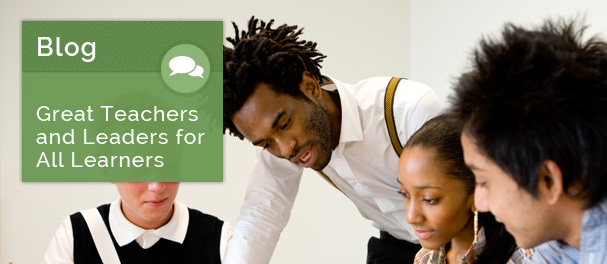Opening the Doors to Opportunity for All
Nearly a century ago, John Dewey reflected on the nature of change in his book Human Nature and Conduct:
"We may desire abolition of war, industrial justice, and greater opportunity for all. But no amount of preaching good will or the golden rule or cultivation of sentiments of love and equity will accomplish the results. There must be change in objective arrangements and institutions."
Today America’s school system needs a major overhaul. Our educational problems are neither fleeting nor amenable to superficial reforms. They go bone deep—right to the very structure of schooling.
We get an inkling of how deep our problem goes when we learn that American students consistently underperform on international tests. We are disturbed when we learn that the dropout rate in Washington D.C. public schools is 36%. We fret when we learn that many teachers are unprepared to teach today’s students.
But these indicators of a struggling system are really only symptoms of a structural problem that will not be fixed through cosmetic reform, tinkering around the edges, or wishful thinking and good intentions.
The Equity Project at AIR is dedicated to uncovering the structural limitations inherent in the current structure of schools and demonstrating through research that there are realistic alternatives that will open the doors of opportunity for all.
With this objective in mind, The Equity Project held its first Research Roundtable in late April at AIR’s Georgetown offices. Participants included some the country’s top researchers and policymakers including James Banks of the University of Washington, Wade Boykin of Howard University, Michael Feuer of George Washington University, David Grusky of Stanford University, Janice Jackson of the National Equity Project, Katherine Marshall of Georgetown University, Hugh Mehan of the University of California, Jeannie Oakes of the Ford Foundation, Lois Weis of the State University of New York and Jorge Ruiz de Velasco of Stanford University.
The Roundtable was the first of four, scheduled for 2014 and 2015, which will establish an empirically-based vision of public education that is inclusive, demanding, and creative. This new model of education reform will be based on social mobility and shared opportunity for low income and minority students. This transformative goal will not be achieved without new thinking. At bottom, this means getting away from the current social reproduction model of change that reproduces inequality based on race and class and blocks upward mobility. Our new model will build on the principles of inclusion, shared excellence, and access to opportunity.
The Equity Project is a laboratory for experimentation, developing approaches to educational innovation that are grounded in theory, supported with data, scalable and sustainable. With these thoughts in mind, this first Roundtable was organized to develop lines of research that will form the intellectual grid for a new educational reform agenda. Based on this work, The Equity Project will produce a volume of commissioned papers, post short papers on its website, and undertake a concerted public engagement campaign to inform policy and public discourse about the new vision of public education.
We can fix this problem. We can open the doors to opportunity for all. The Equity Project intends to be part of this grand undertaking of reclaiming educational opportunity for all. It is time, in the words of John Dewey “to be serious without being fanatical, aspiring without sentimentality, adapted to reality without convention, sensible without taking the form of calculation of profits, idealistic without being romantic.”
This blog originally appeared at the Education Policy Center at AIR.



Add new comment